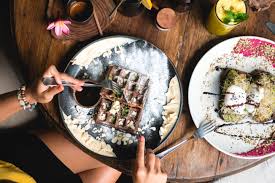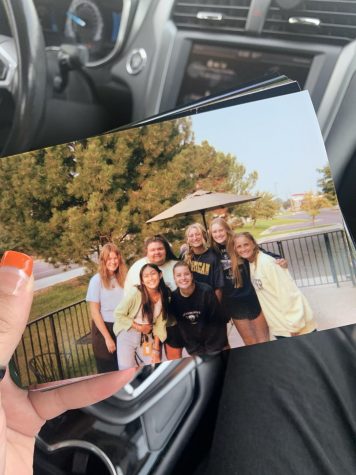Food or Fiction? The Facts Behind Love and Food

Southern hospitality is a culture that I have always been both particularly fond of and interested in as a middle-class white girl from the West. I don’t have much knowledge about Southern day-to-day living, but I admire many of the aspects I do know about: the familiar slur and slow style of the “Southern Drawl,” the immediate warm and friendly aura that accompanies the doorway of a Southern home, and, of course, who could forget, the Southern cooking. Paula Deen is a Southern cooking TV personality that first introduced me to these ideas.
I remember watching a Paula Deen cooking episode, and although the details and particulars of it escape me now, I remember one line especially. She was folding the ingredients in a bowl, I remember that much, and she looked directly into the camera and smiled. What she said next, with that winning smile and motherly Southern drawl, has stuck with me for a long time: “A man’s stomach is the quickest way to his heart.” I’ve thought about that a lot, and even though now I think it’s fair to argue that food is the quickest way to any one person’s heart, because let’s be honest, I’ve met several women who can inhale a pint of ice cream or cookie dough quicker than any man, I think her point still stands. The one question that has remained with me is, How so?
As I’ve thought about the differences in Northern and Southern culture, I’ve come across some resounding differences in terms of American culture and its global counterparts, but to exercise the idea of food as a significant piece of culture, let alone a tool used to enhance person-to-person connection, seems to be a universal social identity. Different foods are celebrated as a cultural necessity, a gathering piece, a palatable emotional experience. To cook for a friend or partner is an invitation of sorts that aims to strengthen those relationships and recreate those same ideas of shared identity and adventure. Food can be used as a vehicle to further deepen that sort of connection.
Similarly, recognizing the largely overlooked role that a certain dish or dinner can play in the emotional wellbeing of a child or adult can help to answer that same question of why? It’s no secret that food can be used as a coping tool in times of emotional stress, and as a person who regularly underestimates the risk of contracting salmonella every time I get my hands on a fresh batch of raw cookie dough, I can and will testify to you that a fair amount of the time I can walk away from the empty bowl feeling both emotionally and physically satiated. There’s a reason that the American people tend to reach for those same foods that played large roles in our shared childhood experience: mac-and-cheese, funeral potatoes, tomato soup. So, perhaps when Paula Deen says stomach, she should instead say heart strings. Creating that sort of emotional stamp on a favorite dish between two lovers or friends is a powerful way of using actions instead of words; showing “I love you,” instead of merely saying it.
And, even though by the end of this article I still regret to inform you that I am that same, middle-class, white girl from the West with only a small amount of knowledge but a big fascination for Southern culture, I don’t think there’s any shame in wanting to adopt some of those traditions. After all, I am a sucker for homemade mac-and-cheese, and I can say wholeheartedly, Southern or not, my future husband will be, too.





